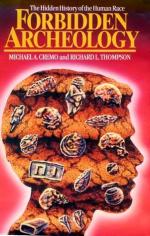|
This section contains 230 words (approx. 1 page at 300 words per page) |
Archaeology is the science that deals with past human life and activities as shown by the artifacts left by ancient people. An archaeological site is carefully surveyed before, during, and at the end of a dig. Surveying involves measuring distances, directions, and angles using equipment such as the theodolite. The sites are then mapped into grids for excavation.
Archeologists use mathematics in several areas of their work. First, knowledge of simple geometry is necessary for measuring variables such as the height and length of artifacts, bones, and relics. An understanding of scale drawing is also a necessity. While excavating a site, the archaeologist draws a top plan to record what each area looks like throughout the dig. This top plan is drawn to scale as much as possible. Additionally, archaeologists need to understand how to reduce a square proportionately.
A knowledge of simple statistics is useful for checking statements that involve comparisons, such as claims that the dimensions of artifacts change over time. An awareness of probability and correlation also leads to a better understanding of sampling. Scientific analyses carried out for purposes such as the identification of rocks or soil result in lists of figures that can only be clarified by statistical methods.
See Also
Distance, Measuring; Ratio, Rate, and Proportion; Statistical Analysis.
Bibliography
Cork, Barbara, and Struan Reid. The Young Scientist Book of Archaeology. London: Lusborne Publishing Ltd., 1984.
|
This section contains 230 words (approx. 1 page at 300 words per page) |


